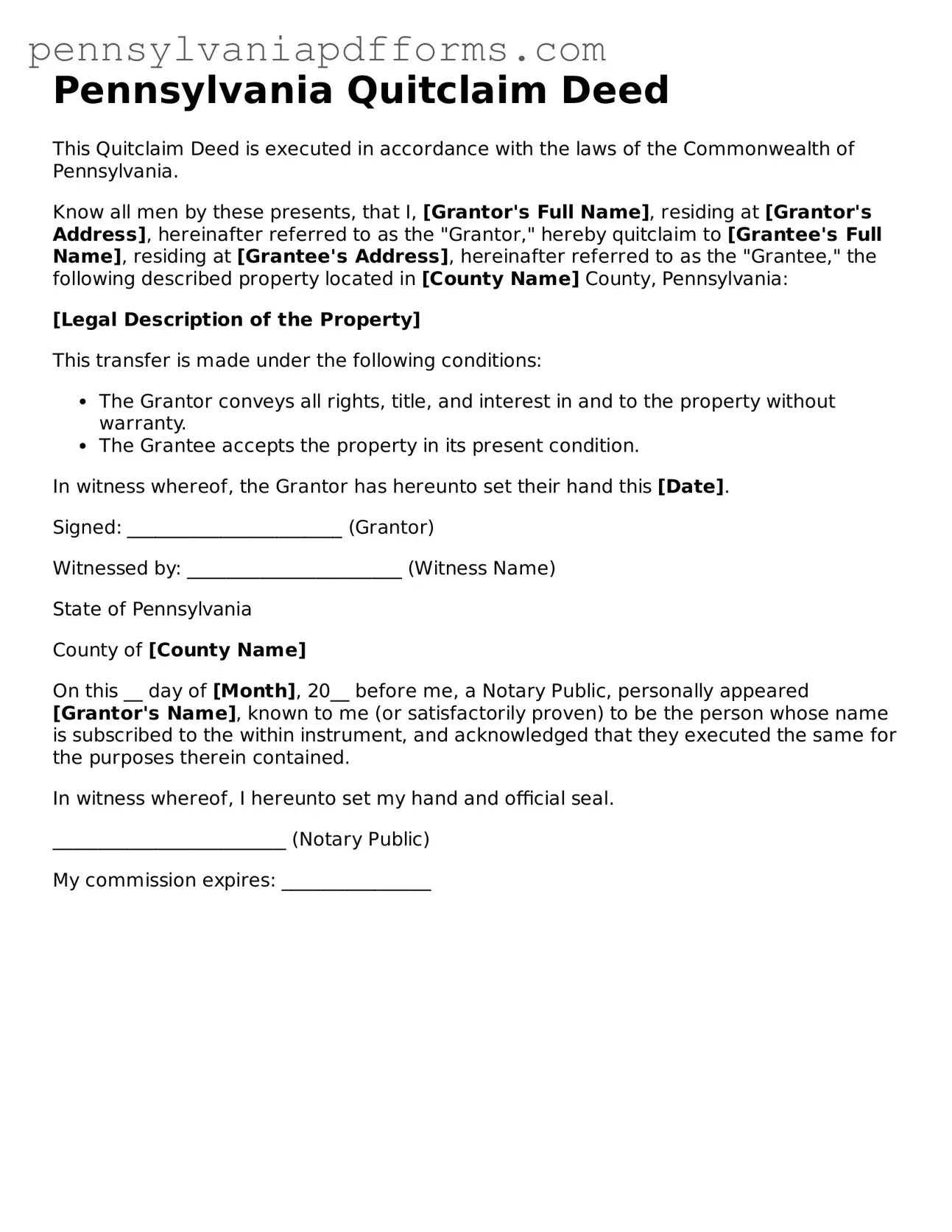Pennsylvania Quitclaim Deed
This Quitclaim Deed is executed in accordance with the laws of the Commonwealth of Pennsylvania.
Know all men by these presents, that I, [Grantor's Full Name], residing at [Grantor's Address], hereinafter referred to as the "Grantor," hereby quitclaim to [Grantee's Full Name], residing at [Grantee's Address], hereinafter referred to as the "Grantee," the following described property located in [County Name] County, Pennsylvania:
[Legal Description of the Property]
This transfer is made under the following conditions:
- The Grantor conveys all rights, title, and interest in and to the property without warranty.
- The Grantee accepts the property in its present condition.
In witness whereof, the Grantor has hereunto set their hand this [Date].
Signed: _______________________ (Grantor)
Witnessed by: _______________________ (Witness Name)
State of Pennsylvania
County of [County Name]
On this __ day of [Month], 20__ before me, a Notary Public, personally appeared [Grantor's Name], known to me (or satisfactorily proven) to be the person whose name is subscribed to the within instrument, and acknowledged that they executed the same for the purposes therein contained.
In witness whereof, I hereunto set my hand and official seal.
_________________________ (Notary Public)
My commission expires: ________________
